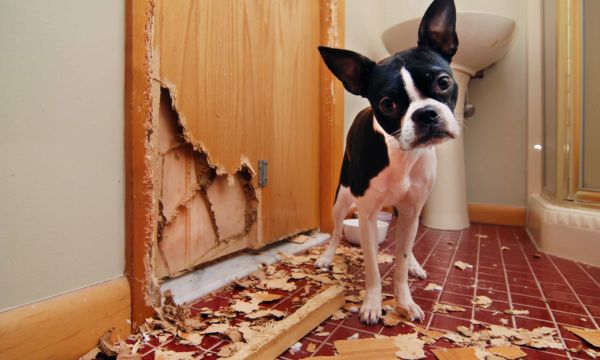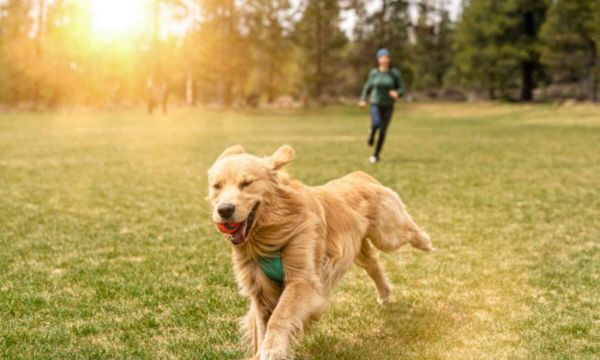Mastering Positive Reinforcement Training
Positive reward training is a powerful and gentle way to teach and shape a dog’s behavior. This approach is based on behavioral psychology and focuses on praising good behavior, which increases the likelihood of it happening again. Whether you’re getting a new puppy or trying to correct your pet’s bad habits, learning positive reinforcement training can help you do great things. In this article, we’ll take a closer look at this method and how you can use it to develop a well-behaved, happy dog as a companion.
How to Train a Dog with Positive Reinforcement:
What does “Positive Reinforcement” mean?
Positive feedback is when you give your dog a treat right after he does what you want him to do. This makes it more likely that the behavior will be repeated in the future. Instead of using punishment, positive feedback focuses on the good things that happened. This makes learning with your furry friend even more fun.
How It Works Scientifically
The idea of operant conditioning is at the heart of how positive reinforcement works when teaching dogs. When a dog does something nice and is rewarded, such as a treat, praise, or playtime, the dog’s brain makes the connection between the behavior and the reward stronger. Over time, this bond will make the dog want to do what you want.
How to Train a Dog with Positive Reinforcement:
Choose the Right Behavior
Before you start teaching your dog positive reinforcement, decide which behaviors you would like to see more of. These can be as simple as “sit” and “stay” or as complex as walking on a leash without pulling. Having clear goals can help you stay on track as you work.
Choose the Right Reward
Just like humans, dogs have their own tastes when it comes to rewards. Some dogs may be more interested in eating, while others may be more interested in playing fetch or rubbing their bellies. Try different things to see what your dog likes best. High-value gifts work best when they try to reinforce more difficult behaviors.
Time and Regularity
In positive reinforcement training, when the reward is given is very important. Rewards should be awarded as soon as the desired behavior occurs. This causes the dog to associate the behavior with the reward. Consistency in how behavior is rewarded helps strengthen the link between action and outcome.
Create a Good Environment for Training Your Dog:
Build Trust and Connections
Positive reward training works best when you develop a trusting and strong bond with your dog. Spend time together outside of training, play and interact in a good way. If you and your dog trust each other, your dog will be more eager to please and more receptive to your suggestions.
Minimize Negative Punishments
Positive reinforcement training is all about giving your dog a good and safe place to learn. Do not use negative measures such as yelling or hitting. These methods create anxiety and worry that can make learning difficult. Instead, you should try to reinforce good behavior and ignore bad behavior.
How to Use Positive Reinforcement in Dog Training:
Learn the Most Basic Commands
Positive reinforcement is a great way to teach your dog simple commands. When you tell your dog to sit and receive a treat or a compliment, he will learn that sitting is a good thing. This makes them more likely to comply every time.
Get Rid of Bad Habits
Positive feedback can also be used to discourage bad habits such as barking or jumping too much. By giving your dog treats when he is calm, you can teach him to prefer this behavior over the one you don’t want him to do.
Enhancing Socialization Skills
It is important that your dog gets to know other dogs and people. Positive reinforcement can help your dog create beautiful memories of new things, making him feel more comfortable and confident in different situations.
Steps to Training Your Dog Through Positive Reinforcement:
Set Clear Goals
Make sure you know exactly what you want your dog to do. Having clear goals will keep your training on track and effective, whether it’s teaching you basic commands or changing specific behaviors.
Set Up a Reward System
Experiment with different types of treats to see what your dog likes best. Use a combination of treats, toys, and acts of love. Be sure to reserve the best rewards for the most difficult behaviors.
Time and Regularity
Once your dog does what you want, reward him. This makes the link between action and reward even stronger. If you train your dog consistently, your dog will learn what you want from him.
Problems and Pitfalls to Avoid when Training Your Dog:
Over-reliance on Treats
While rewards are great motivators, don’t rely on them too heavily. As your dog gets better at what you want to do, you can reduce the number of times you give him a treat. This ensures that your dog is not only after treats.
Lack of Patience
Even if you are teaching a dog, behavior change takes time. The key is to be patient. Celebrate small victories and don’t get frustrated when things don’t go as planned. Consistent and time-consuming training lays a solid foundation.
Set People’s Preferences Aside
Every dog is different. Pay attention to what your dog likes and what turns him or her on. Some dogs may prefer to play rather than be rewarded, so make sure the benefits you offer your dog match their preferences.
Success Stories: Real Life Examples
From Jumping to Greeting
Think of a dog jumping on people as they pass by. Through training and positive feedback, the dog learns that sitting quietly attracts his attention and is rewarded. Over time, the dog stops jumping as it learns that sitting gets more treats.
Leash Reactivity to Calm Walks
Positive reinforcement can also help improve reactivity on the leash, i.e. when the dog pulls on the leash or acts with force. By rewarding your dog for calm behavior and letting him go, your dog can learn that staying calm makes walking more enjoyable.
How Positive Reinforcement Affects the Mind:
Gain More Confidence
Positive feedback makes your dog feel better about himself. When they know which actions lead to benefits, they feel better about themselves and are more likely to try new things.
Strengthening the Human-Dog Bond
During the training, people get to know each other better. When good things happen, your dog will think of you, which will strengthen your friendship and make it even more special.
Conclusion:
Positive reward training for dogs is an amazing journey that leaves you with a well-behaved, confident and happy furry friend. By focusing on praise, rewards, and understanding, you can not only change the way someone behaves, but you can build a trusting, positive relationship that will last a lifetime. As you embark on this training journey, remember that every interaction with your dog is an opportunity to grow your relationship with him and build a happy, peaceful relationship.
FAQs:
1. What are the main principles of positive reinforcement training for dogs?
An important principle of positive reinforcement training for dogs is to reward desired behaviors to encourage repetition, promoting a positive learning experience without resorting to punitive methods.
2. Can positive reinforcement training be used for all dog breeds?
Positive reinforcement, of course, works with all dog breeds and sizes. Every dog can benefit from this approach, as its unique personalities and preferences are taken into account.
3. How do I choose the right reward for my dog?
Experiment with rewards such as treats, toys, and loving gestures. Observe what excites your dog the most and use those rewards in training.
4. Can positive reinforcement help with more challenging behaviors?
Yes, positive reinforcement can address challenging behaviors by teaching more rewarding alternative actions. For example, a dog that exhibits aggressive behavior may learn that calm behavior leads to positive outcomes.
5. Is patience important in positive reinforcement training for dogs?
Patience is crucial when training a dog. Behavioral change takes time and every dog develops at its own pace. Celebrate small wins and maintain a consistent approach.
Be sure to check out our article: Dog Grooming Tools and Equipment. You’ll be surprised at how it will help you clarify doubts on the subject.
 Stop Destructive Chewing: Solutions
Stop Destructive Chewing: Solutions
Chewing is a natural behavior for dogs. It keeps them aware of their surroundings, keeps their teeth […]
More Enrichment Activities for Behavior Improvement
Enrichment Activities for Behavior Improvement
Owning a pet is a rewarding experience, but it’s also your job to meet your furry friend’s […]
More The Role of Exercise in Dog Behavior
The Role of Exercise in Dog Behavior
Exercise is important not only for your dog’s physical health, but also for his or her behavior, […]
More